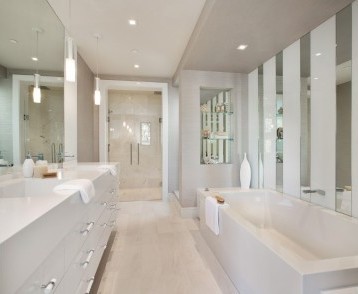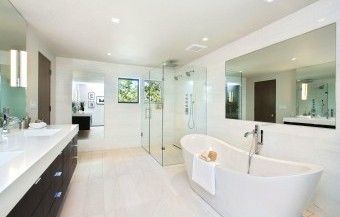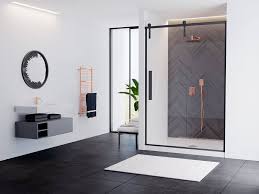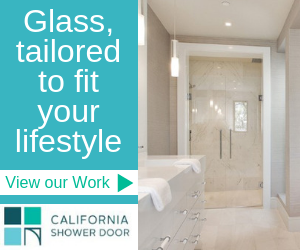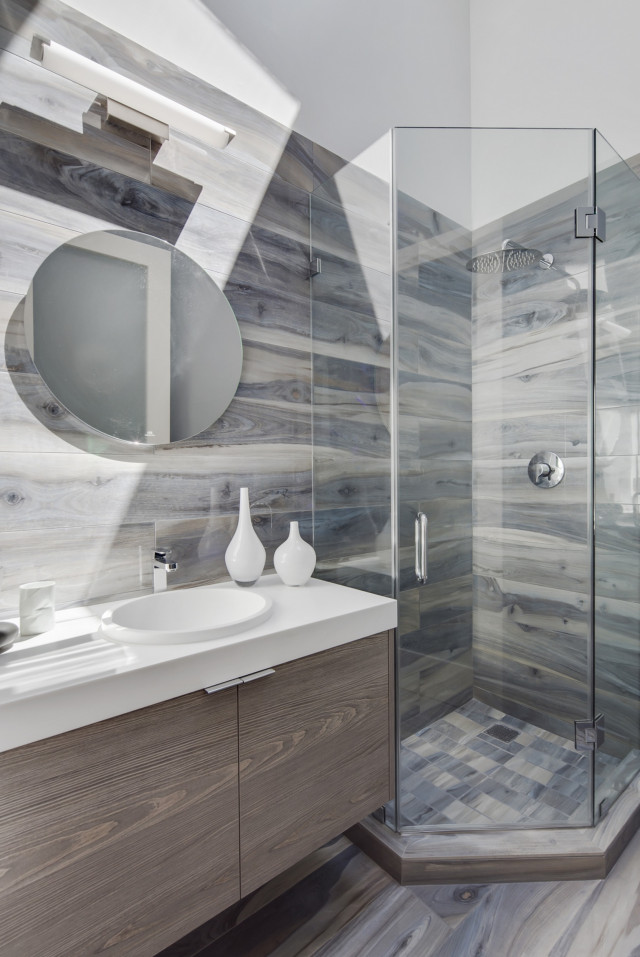

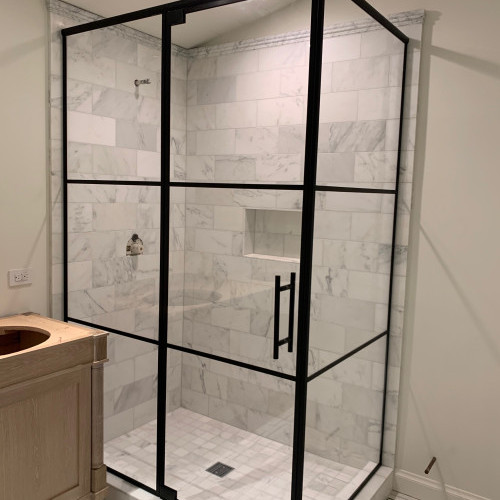
Selecting the Right Shower Enclosure
The questions to ask and options to consider for your new shower.
When considering the purchase of a shower door or enclosure, the first item to be decided is, "What type of enclosure should I consider?" There are basically two types of enclosures available, from which there are a myriad of options. The two basic types are a hinged door and a set of sliders. All the variations of enclosures in the marketplace, no matter who the manufacturer, all start out with either a hinged door or a set of sliders. Thus, rephrasing the original question slightly, the first question to be answered is, "Do I want a hinged door enclosure or a set of sliders?"
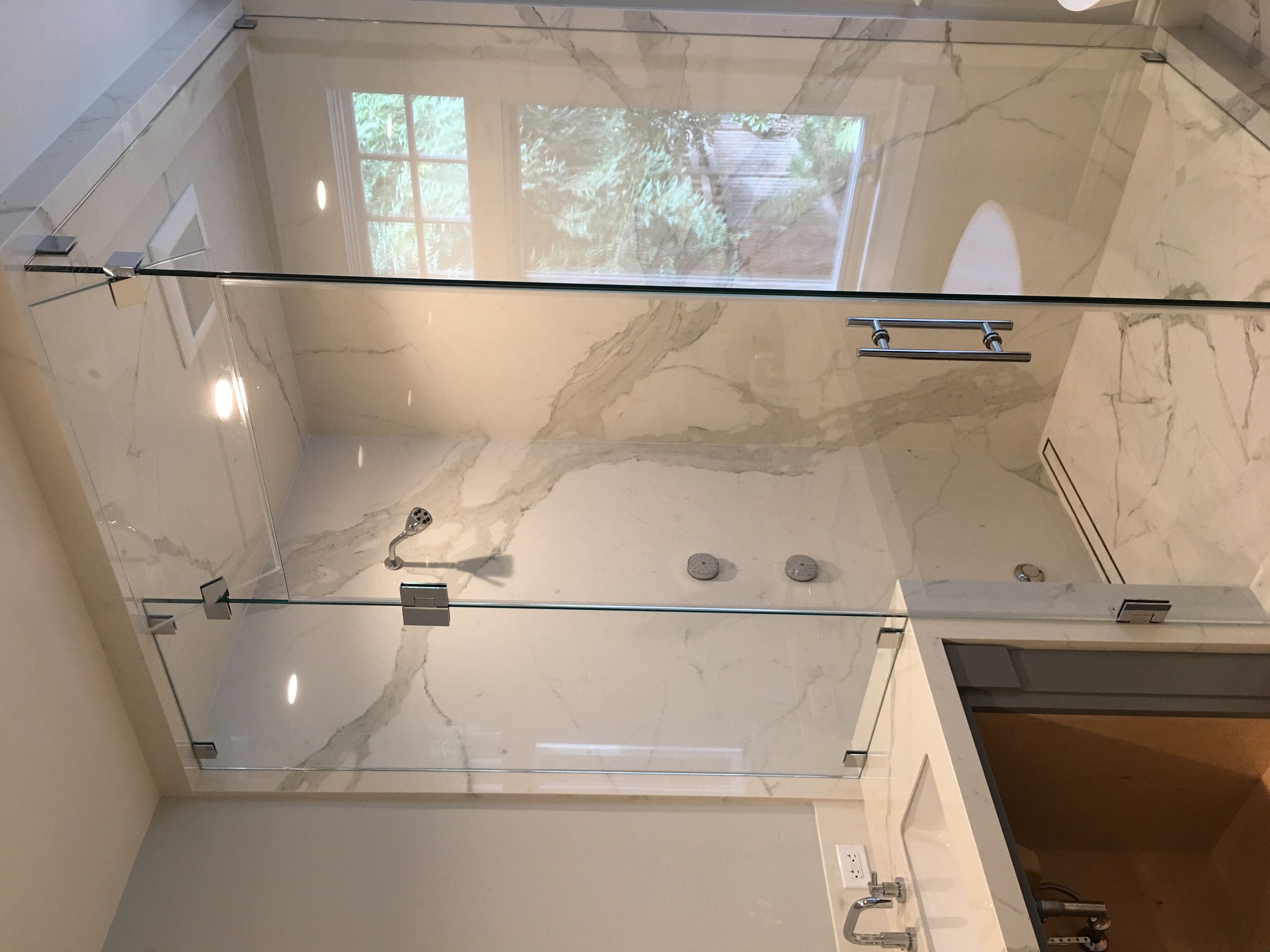
A second consideration is, "What is the door or enclosure going to be installed upon?" If the unit is going to be installed on a tub, then the most likely enclosure will be a set of sliders. If the unit is going to be installed on a shower pan, it could either be a set of sliders or a hinged door system.
As was mentioned earlier, there are many variations to even the basic designs listed above. Some of these variations include different colors of metal, different types of glass, and differences in the thickness of the glass employed.
When choosing a color for your enclosure the basic rule of thumb is to match the predominant fixture color in the bathroom. Thus, if all your fixtures are chrome, then you would want the framing material of the enclosure to be chrome. If the fixtures in the bathroom were primarily brushed nickel, you would try to have brushed nickel as your enclosure color. If you have a painted color request (white, black, blue, etc.), powder coated colors are available.
Since the mid-1980's, there has been an explosion in the usage of different types of glass in shower doors and enclosures. Prior to this, the options to a client generally revolved around deciding between clear glass or obscure glass. Presently, there is a new "type" of clear glass available called "starphire" or "opti-white". This glass has had the majority of its iron removed, contributing to an almost perfectly clear tint or hue to the glass. There is nearly none of the "green" associated with regular clear glass. This "starphire" glass is an extremely useful application in bathrooms where clients want the "true" look of their tile and or marble. The "starphire" glass doesn't distort the look of the tile because it doesn't have the "greenish" tint commonly associated with clear glass.
The growth in different types of obscure glass has been staggering. The old obscure pattern is still going strong with clients who want privacy in the tub/shower, but many clients have gone to more interesting variations in the obscure patterns for aesthetic reasons. These variations include "rain", "smooth-rough", and "glue chip", glass. All of these patterns are interesting to look at while still maintaining privacy.
A major design change in the shower door industry has been the use of "thick" or "heavy" glass. Traditionally, shower door glass has been 3/16" in thickness. However, the last ten years has seen the steady rise in the utilization of thick glass, hereby defined as either 3/8" or 1/2" thick glass. Deploying heavy glass in shower doors and enclosures gives the enclosures more structural rigidity and makes the enclosures an interesting feature in the bathroom.
For more information on the right shower enclosure for your home, contact California Shower Door linked below:
